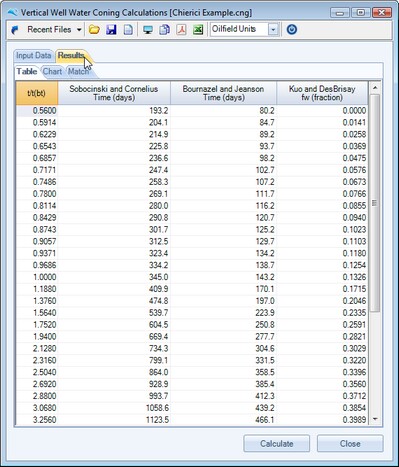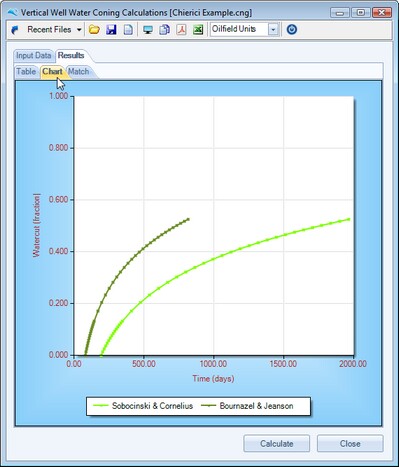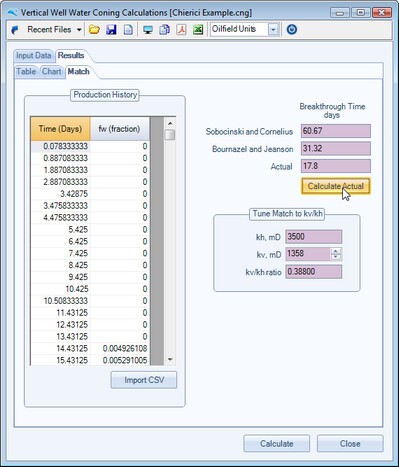|

  
|
||
Chierici provides the following example in Chapter 12 of his textbook "Principles of Petroleum Reservoir Engineering Volume 2".
Input Data
Perforated Interval, m |
6 |
Thickness of Oil Zone, m |
30 |
Total Thickness, m |
50 |
Wellbore Radius, m |
0.1052 |
Drainage Boundary Radius, m |
321 |
|
|
Porosity, fraction |
0.25 |
Radial Permeability, mD |
500 |
Vertical Permeability, mD |
500 |
kv/kh ratio |
1 |
|
|
Endpoint kro, fraction |
0.9 |
Endpoint krw, fraction |
0.4 |
Oil Density, gm/cc |
0.78 |
Water Density, gm/cc |
1.03 |
Oil FVF, Bo rm³/sm³ |
1.25 |
Water FVF, Bo rm³/sm³ |
1 |
Oil Viscosity, cP |
2 |
Water Viscosity, cP |
0.6 |
|
|
Oil Flow Rate, m³/d |
100 |
Once the user has successfully input all the required data, as shown in the following two screen captures, they can press the calculate button to perform the coning calculations.
|
|



With the above input panel, and a knowledge of production history (time in days and watercut), the user can iterate the vertical permeability to achieve an acceptable match. See example provided below.
|
|
Page url: http://www.YOURSERVER.com/help/index.html?example3.htm